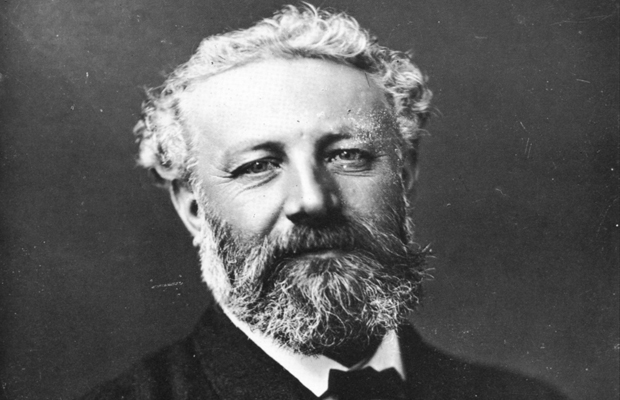
Science fiction, they say, doesn’t really deal with the future; it uses the setting of the future as a way to deal with the present. That would explain all the standard preposterous tropes you regularly see in the genre’s less gracefully aging novels and films: jetpacks, flying cars, holo-phones, that sort of thing. So when you look into sci-fi’s back pages and do come across the occasional accurate or even semi-accurate prediction of the future — that is, an accurate prediction of our present — it really jumps out at you. Many such predictions have jumped out at readers from the pages of Jules Verne’s lost second novel, Paris in the Twentieth Century.
Originally written in 1863 but not published until found at the bottom of a vault in 1994, the book’s scorecard of seemingly bang-on elements of the then-future include the explosion of suburban living and shopping and large-scale higher education; career women; synthesizer-driven electronic music and a recording industry to sell it; ever more advanced forms of ever cruder entertainment; cities of elevator-equipped, automatically surveilled skyscrapers electrically illuminated all night long; gas-powered cars, the roads they drive on, and the stations where they fill up; subways, magnetically-propelled trains, and other forms of rapid transit; fax machines as well as a very basic internet-like communication system; the electric chair; and weapons of war too dangerous to use.
You may sense that the young Verne did not see the future, which takes its form in the novel of Paris in 1960, as a utopia. In fact, he went a little too far in using the setting and its story of an artistic soul adrift in a culturally dead, progress-worshiping technocracy to express his own anxieties about the 19th century and its rise of conglomeration, automation, and mechanization — or so thought his publisher, who believed the book’s bleak predictions, even if accurate, would fail to win over the common reader. “My dear Verne,” he wrote in his rejection letter to the author, “even if you were a prophet, no one today would believe this prophecy… they simply would not be interested in it.”
But over 150 years later, the predictions of Paris in the Twentieth Century do interest us, or at least those of us who wonder whether we’ve handed too much of our humanity over to the realms of technology, finance, and entertainment. Even if Richard Bernstein, reviewing the novel in The New York Times when it finally saw publication, found its satire “weak, innocent and adolescent in light of what actually happened in the 20th century,” it has given us more than ever to talk about today. To get in on the conversation, have a listen to the episode of the Futility Closet podcast on the book just above. Do you think Verne accurately foresaw our current condition — or does his dystopia still lie in wait?
Related Content:
How French Artists in 1899 Envisioned Life in the Year 2000: Drawing the Future
Isaac Asimov Predicts in 1964 What the World Will Look Like Today
In 1964, Arthur C. Clarke Predicts the Internet, 3D Printers and Trained Monkey Servants
Walter Cronkite Imagines the Home of the 21st Century … Back in 1967
The Internet Imagined in 1969
In 1900, Ladies’ Home Journal Publishes 28 Predictions for the Year 2000
Future Shock: Orson Welles Narrates a 1972 Film About the Perils of Technological Change
Based in Seoul, Colin Marshall writes and broadcasts on cities and culture. He’s at work on a book about Los Angeles, A Los Angeles Primer, the video series The City in Cinema, the crowdfunded journalism project Where Is the City of the Future?, and the Los Angeles Review of Books’ Korea Blog. Follow him on Twitter at @colinmarshall or on Facebook.


I can’t help but wonder if this really was written in 1863. I mean finding it a vault in 1994 makes it quite possible for one to adopt a writing style & present a “found unpublished” book. Especially when there is no one to from that period alive to challenge it.
Someone in the 1990’s would not have to make a long stretch to predict this. It seems more likely under the found scenario.
Having said that, if this is a book written in the 1800s it’s quite impressive. Indeed